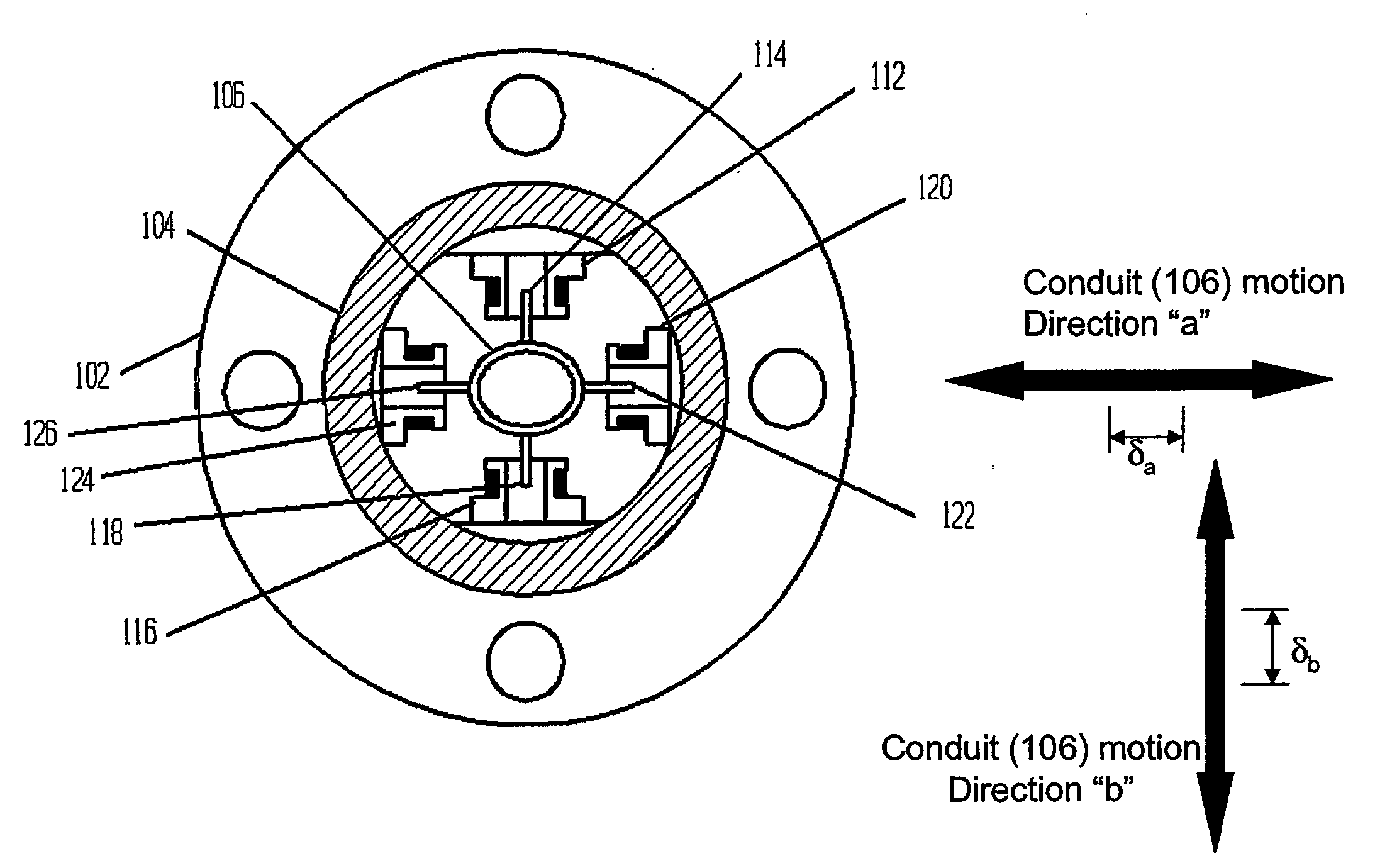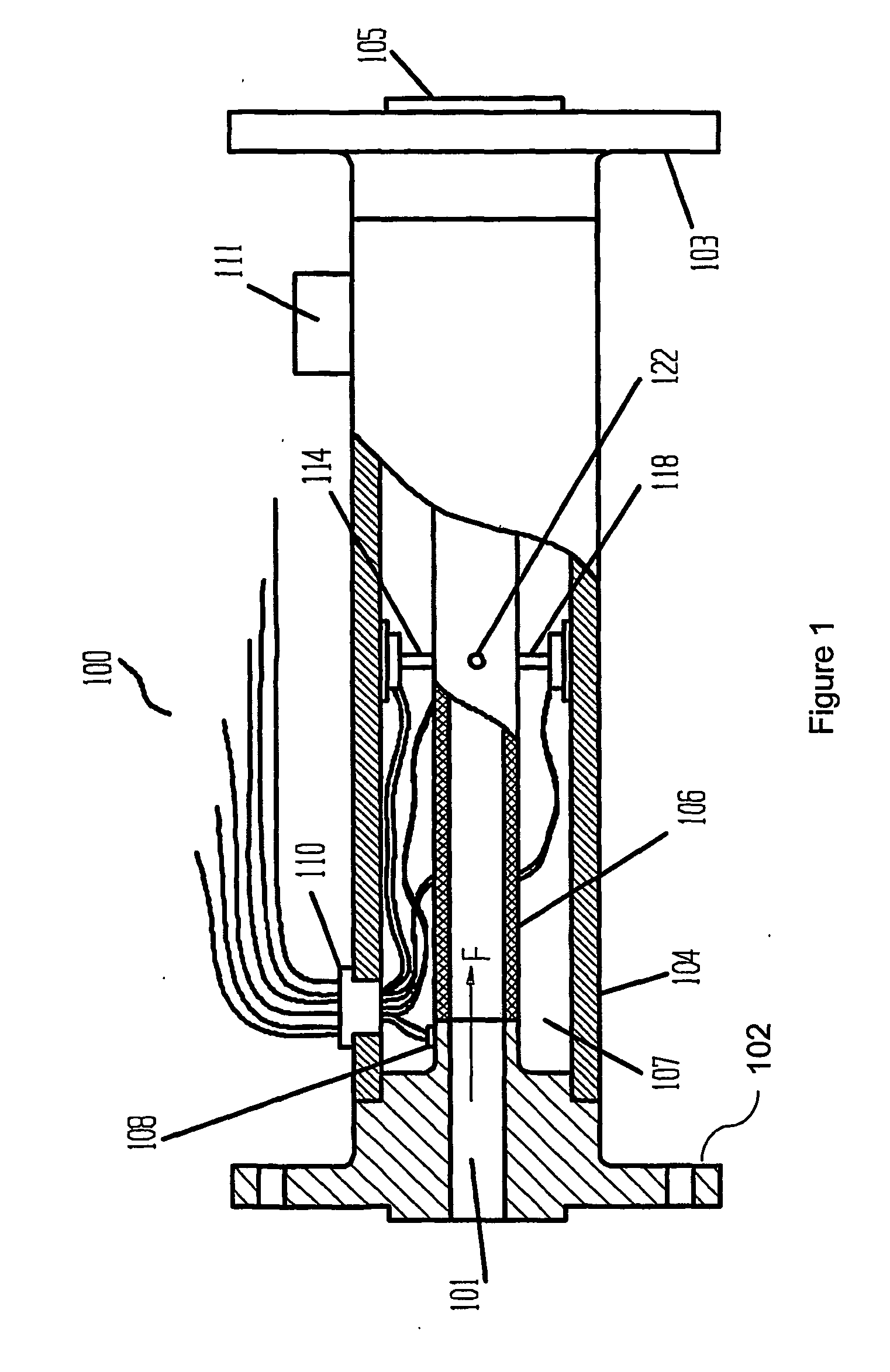Precise pressure measurement by vibrating an oval conduit along different cross-sectional axes
a technology of cross-sectional axes and precise pressure measurement, which is applied in the direction of instruments, specific gravity measurement, machines/engines, etc., can solve the problems of difficult installation requirements, bernoulli devices may disadvantageously require tubing penetration,
- Summary
- Abstract
- Description
- Claims
- Application Information
AI Technical Summary
Problems solved by technology
Method used
Image
Examples
Embodiment Construction
[0063] While the invention is amenable to various modifications and alternative forms, a specific embodiment thereof is shown by way of example in the drawings and will herein be described in detail. It should be understood that the teaching is by way of example, not of limitations to the particular form disclosed.
[0064] With reference now to the pressure figures and in particular with reference to FIG. 1, an embodiment hereof is shown in sensor 100, which may also be configured as a straight tube Coriolis flow meter, densometer, and viscosimeter. Sensor 100 is configured for determining a pressure of the fluid based on a squared ratio of detected frequencies resulting from vibration of conduit 106. In this embodiment, conduit 106 has an elliptical cross-section and is attached to ridged flanges 102 and 103. Typical wall thickness of conduit 106 would range between 0.006 inches to 0.25 inch, however, other wall thicknesses maybe used. Conduit 106 preferably comprises metal but coul...
PUM
 Login to View More
Login to View More Abstract
Description
Claims
Application Information
 Login to View More
Login to View More - R&D
- Intellectual Property
- Life Sciences
- Materials
- Tech Scout
- Unparalleled Data Quality
- Higher Quality Content
- 60% Fewer Hallucinations
Browse by: Latest US Patents, China's latest patents, Technical Efficacy Thesaurus, Application Domain, Technology Topic, Popular Technical Reports.
© 2025 PatSnap. All rights reserved.Legal|Privacy policy|Modern Slavery Act Transparency Statement|Sitemap|About US| Contact US: help@patsnap.com



